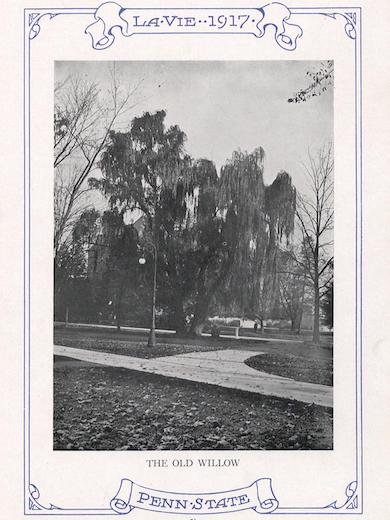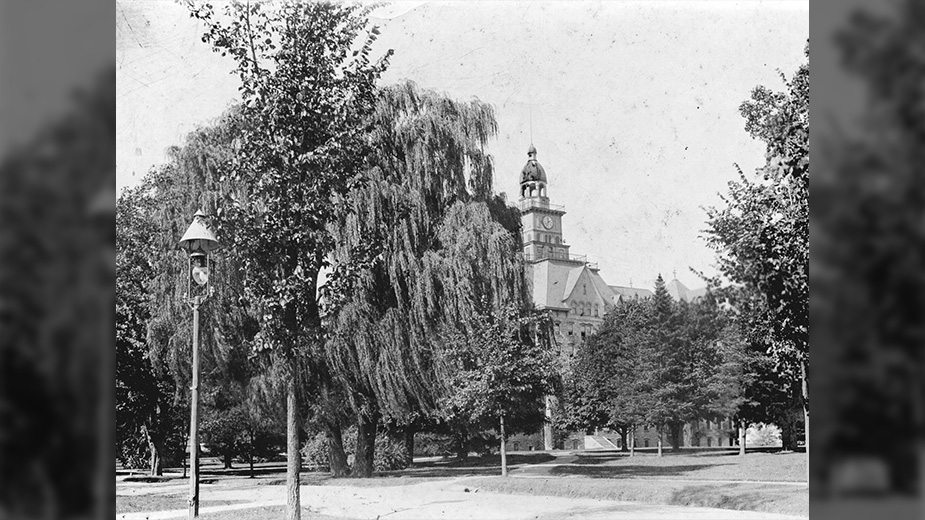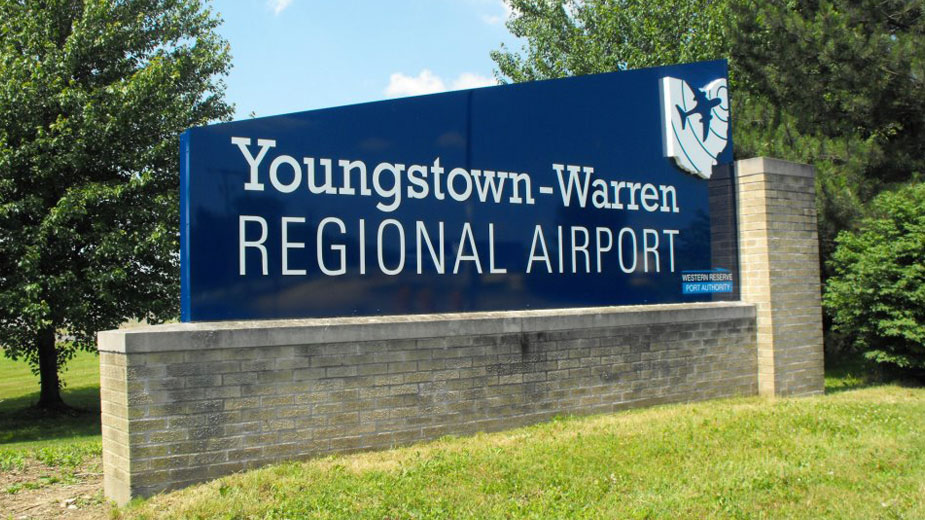Old Willow: Penn State’s Longest-living Tradition
By Laura Waldhier and Jessica Hallman
UNIVERSITY PARK, Pa. – This week, one of Penn State’s longest living traditions was revitalized.
The fourth generation Old Willow, one of the university’s most historically significant trees, was planted on the Old Main lawn at University Park on Friday.
The original “Old Willow” was planted on campus by Professor of Horticulture William G. Waring in 1859, around the time the college admitted its first students.
Waring, who laid out roads, buildings, orchards and landscaping as the college’s first superintendent of farm and grounds, located the weeping willow (Salix babylonica “Pendula”) beside the main driveway of the front campus (on today’s Allen Street mall, across from Sackett Building).
It’s not clear when students dubbed it the “old willow,” but the tree quickly captured their hearts.
“So long the ‘picture of loveliness and stately grace,’” wrote Penn State historian Erwin W. Runkle in 1934. “No one who ever saw it and loved it in its prime will ever forget its beauty and majesty.”

Various claims as to the tree’s origins include that it was brought from Europe by founding President Evan Pugh, a scion of one growing in Twickenham, the famous garden of English poet Alexander Pope. Another legend is that it was planted to mark the turning spot for contractors’ wagons bound for the original Old Main construction site. Or Waring may have planted it from his own stock, as he tended many willow saplings in the college’s nurseries.
Regardless of where it came from, the weeping willow was revered by students. It became “the recipient of boundless sentiment, of many poems of praise, and of myriad photographs,” Runkle said. Freshmen bowed and tipped their caps to it on passing. Recognized by everyone, it became a favorite meeting spot on campus.
The students’ feeling for their “old willow” is exemplified by this excerpt from a student-penned poem in the 1894 La Vie yearbook:

Sentinel thou art!
Dear old Willow!
’Neath thy waving, verdant tresses,
Ever coming, ever going,
Pass the tides of busy students,
Ever ebbing, ever flowing:
Untamed Freshmen, all-wise Sophomores,
Stately Seniors, hearty Juniors,
In a motley, ceaseless thronging,
’Neath thy ever-faithful guarding,
Chatting, laughing, thinking, studying
As they go.
Eventually, old age took its toll, and despite the best efforts of the college to prolong its life, Old Willow fell in a windstorm Aug. 21, 1923.
Fortunately, the college had had the foresight to take a cutting in 1914 and planted it near the same site. This second-generation Old Willow grew and flourished through the late 1970s, until it, too, succumbed. In turn, an offshoot of this tree was planted near the southwest corner of Old Main. That third-generation tree stood until March 26, 2021, when it came down due to strong winds throughout central Pennsylvania.
In 2013, Penn State designated Old Willow as a Heritage Tree, a program to protect trees of distinction. A historical marker, placed in 2014, commemorates the location of the original tree.
According to an article in the Penn State Alumni News of October 1966, cuttings of the original tree were given to members of the class of 1921 at their senior banquet, and “the tradition of the old tree may spring up in the backyards of alumni throughout the state and nation.”
Since 2021, the Office of the Physical Plant has grown 30 to 40 viable Old Willow descendants in its nursery from cuttings taken from the tree that fell three years ago. In addition to the one being planted on the Old Main lawn Friday, others have been made available for planting at Penn State commonwealth campuses and other university locations.
Pictured at top: This photograph, taken between 1892 and 1923, shows the original Old Willow, with Old Main in the background. (Penn State University Archives | Penn State | Creative Commons)
Published by The Business Journal, Youngstown, Ohio.



